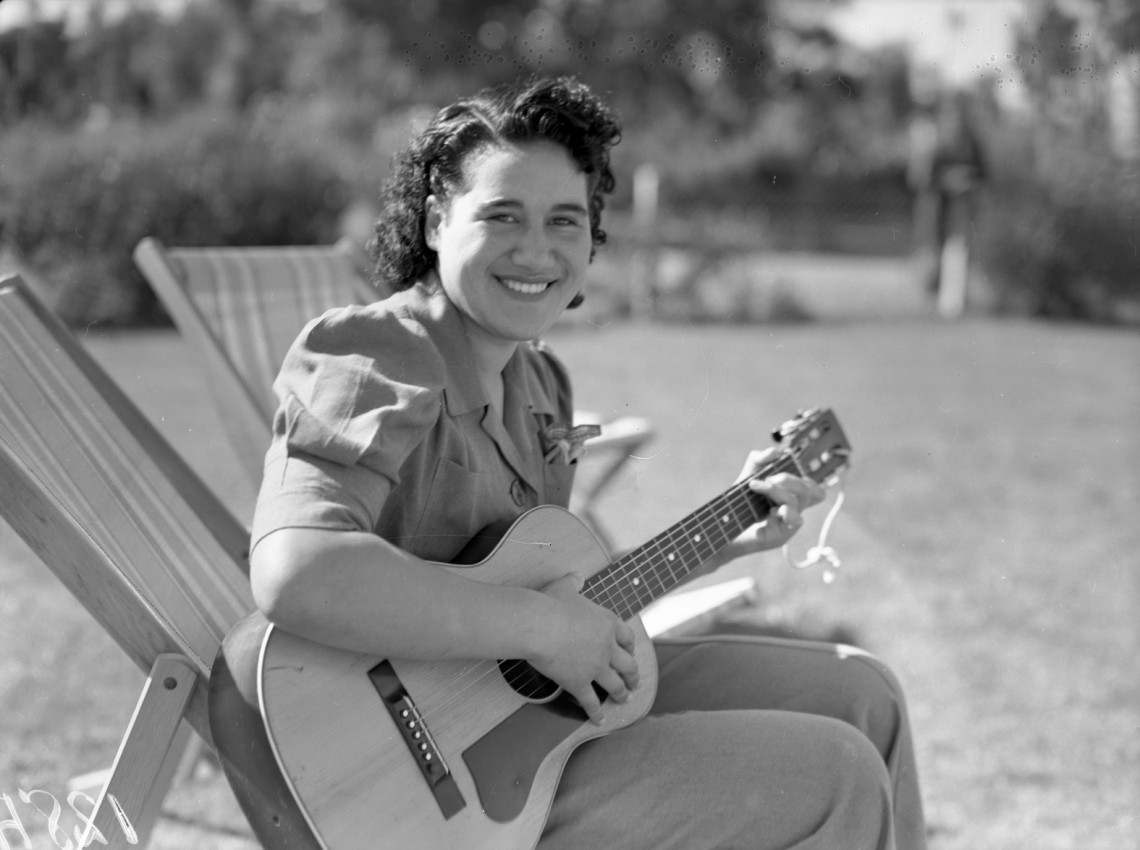Māori Women in the Armed Forces


18 April, 2020
Where are the accounts of Māori women in New Zealand’s history of military service?
Of the many books published about New Zealand’s military history none are specifically dedicated to the story of Māori women who served in the armed forces during the Second World War. They joined the Navy, Army and Air Force, but their experiences in these services, including their successes, and the barriers they faced, is little known or understood.
Wartime labour needs saw mobilisation of women into essential work, and this also included access to service in the military. The Army, Air Force, and Navy all opened their recruitment to women, forming distinct auxiliary forces. In February 1942, the Women’s Auxiliary Army Corps (WAAC) and Women’s Royal New Zealand Navy Service (WRNZNS) were formed. But the first auxiliary established was the Women’s Auxiliary Air Force (WAAF), in January 1941. Each of the services worked closely with the Women’s War Service Auxiliary (WWSA) organisation to recruit women and manage their placement. In total, 10,000 women served in the armed forces during the war.
Stacey Fraser, a history honours student at the University of Otago, is currently researching the story of the Women’s Auxiliary Air Force. In total, around 4750 women joined the WAAF and served on RNZAF Stations across the country.[1] A small number were employed as aircraft hands or transport drivers, but most were posted to kitchens and mess halls, or served as clerks, and telephone operators, or in medical support roles – jobs that fell within the skills traditionally expected of women.
So far, Stacey has identified at least 150 Māori women who joined the Air Force during the Second World War. Most were posted to the Levin, Ohakea, Rotorua, Whenuapai, Rongotai and Wigram RNZAF Stations. Smaller numbers of Māori women were based at Tauranga, Blenheim, Hamilton and Gisborne. Of these 150 women, they came from across the country with Northland, the East Coast, Poverty Bay and the Bay of Plenty well-represented. A handful of Kāi Tahu women from the South Island joined the WAAF, as did at least one woman from the Chatham Islands: Meri Dix.[2]
Some Māori women joined the armed services because they had whānau in the forces. It was not uncommon for sisters to join the same service. Freda and Olive Shalfoon, sisters of the famous dance band musician Epi Shalfoon, both served in the WAAF, as did Catherine and Lulu Bryers. Others served alongside brothers who were in the Air Force, such as the Tuapawa siblings from Te Karaka: both Kenneth and Ethel were stationed at Ohakea.[3] The Paenga sisters, and their brother, all joined the Air Force but were spread across three stations: Ohakea, Mangaroa, and Nelson.[4]
Occupations were diverse. Janie Pēwhairangi (Ngāti Porou) was a wireless operator at Levin.[5] Catherine Bryers joined the WAAF in 1942 starting out as an accounts clerk. Ulva Bradshaw (Kāi Tahu) enlisted in 1942 and was stationed at Blenheim, before training at the Electrical and Wireless School at the Wigram airbase in Christchurch.[6] A group of four Māori women were employed as aircraft hands at Whenuapai. But the majority served in kitchens and mess halls, or in the stores, like Dulcie Brooking from Te Kaha who worked in the Equipment Stores at Ohakea.[7]
As part of her research Stacey is tracing the post-war lives of those who served with the WAAF. Marriage was the outcome for many. Some, like Catherine Bryers, stayed in the Air Force until 1962, rising to Warrant Officer in 1952 after ten years of service. Others trained as teachers and served their people in Māori schools or, like Anne Delamere, who served with the WAAF from 1942 to 1947 at Wellington, became a Māori welfare officer, a leading figure in the Māori Women’s Welfare League and a highly respected community leader. When she received a New Years Honour in 2004, Anne reflected: “It is an honour, not for me, but for all the other women from the North Island to the South, in the rural communities and the urban areas, who keep things going - those unsung women who keep the wheels turning.”[8]
Did your kuia join the Army, Navy or Air Force during the Second World War? Why did they join and what was their experience like? How did their service impact on their post-war lives?
Sharing these stories means that Māori women’s service on the home front is never forgotten. Let’s make sure they take their place as part of Aotearoa’s ANZAC story.
[Image: Māori member of the Women’s Auxiliary Air Force playing the guitar during a musical hour. PR128a, New Zealand Air Force Museum, Christchurch).
[1] https://nzhistory.govt.nz/foundation-of-the-womens-auxiliary-air-force
[2] https://www.aucklandmuseum.com/war-memorial/online-cenotaph/record/183882
[3]Gisborne Herald, 4 January 1945.
[4]Gisborne Herald, 20 December 1944.
[5]Janie later joined the Women’s Auxiliary Army Corps (See: https://paperspast.natlib.govt.nz/newspapers/GISH19440324.2.78?end_date=31-12-1950&items_per_page=10&page=3&query=pewhairangi&snippet=true&start_date=01-01-1940)
[6] Helen Brown, ‘Ulva Lynn Belsham (1921-2011)’ in Tāngata Ngāi Tahu.
[7] Opotiki News, 4 February 1949.
[8] ‘New Years Honour: Anne Delamere’, NZ Herald: https://www.nzherald.co.nz/nz/news/article.cfm?c_id=1&objectid=3541623